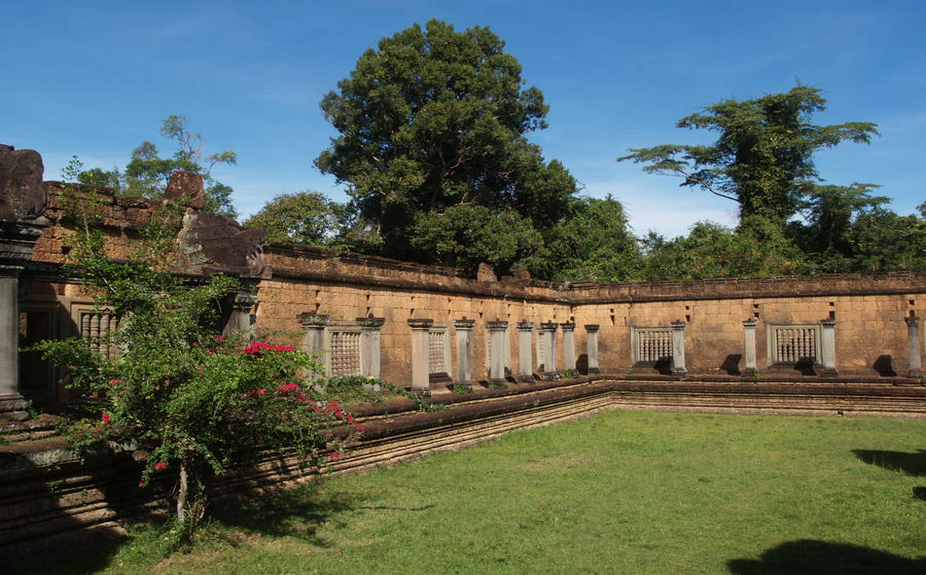Banteay Samre Temple
 Banteay Samre Temple is one of the most complete complexes at Angkor due to restoration using the method of anastylosis. Unfortunately, the absence of maintenance over the past 20 years is evident. The name Samre refers to an ethnic group of mountain people, who inhabited the regions at the base of Phnom Kulen and were probably related to the Khmers. No inscription has been found for this temple, but the style of most of the architecture is of the classic art of the middle period similar to Angkor Wat. The monument most likely dates from the same period, or, perhaps, slightly later, although there are additions attributed to the Bayon style.
Banteay Samre Temple is one of the most complete complexes at Angkor due to restoration using the method of anastylosis. Unfortunately, the absence of maintenance over the past 20 years is evident. The name Samre refers to an ethnic group of mountain people, who inhabited the regions at the base of Phnom Kulen and were probably related to the Khmers. No inscription has been found for this temple, but the style of most of the architecture is of the classic art of the middle period similar to Angkor Wat. The monument most likely dates from the same period, or, perhaps, slightly later, although there are additions attributed to the Bayon style.
The proportions of Banteay Samre are plended. A unique feature is an interior moat with laterite paving, which when filled with water must have given an ethereal atmosphere to the temple. All of the buildings around the moat are on a raised base with horizontal mouldings, decoreated in some areas with figures framed by lotus buds.
The temple underwent extensive restoration this century by archaeologists using the anastylosis method. Banteay Samre was constructed around the same time as Angkor Wat. The style of the towers and balustrades bear strong resemblance to the towers of Angkor Wat and even
more so to Khmer temple of Phimai in Thailand. Many of the carvings are in excellent condition. Banteay Samre is a bit off the Grand Circuit, near the southeast corner of the East Baray. The trip there is a nice little 3km road excursion through villages and paddies. Combine a visit to Banteay Srey with a stop at Banteay Samre on the way back.